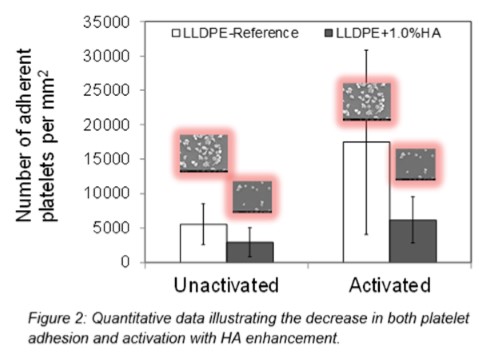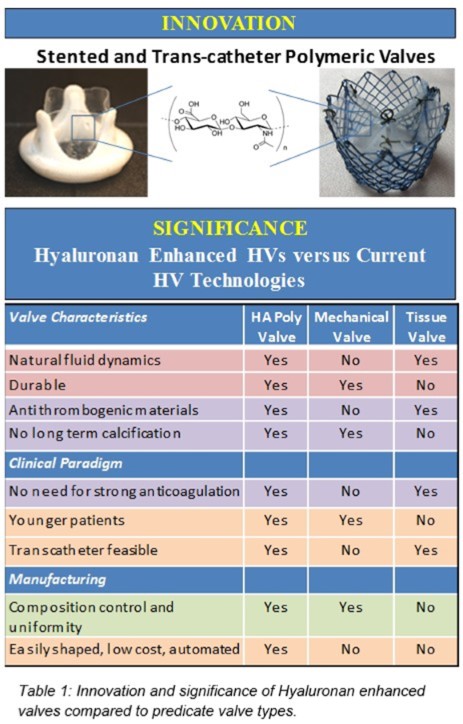Description:
There are currently 300,000 heart valve replacements each year worldwide and this number is estimated to triple by 20501. The materials most often utilized for these replacement valves can have substantial drawbacks for patient health. Bioprosthetic heart valves have shorter functional lifespans when compared to non-biological mechanical heart valves and can be substantially more expensive to manufacture. Mechanical heart valves are much less expensive because of their abil- ity to be mass produced, but are much more prone to cause thrombosis. Patients receiving mechanical valves usually spend a lifetime taking anti-coagulation drugs.
Researchers at Colorado State University have developed novel methods for enhancing engineering plastics with natural biomolecules such as hyaluronan. They have used these novel materials to make flexible polymeric leaflets for prosthetic heart valves, resulting in heart valves with excellent hemodynamics (figure 1) and low thrombogenecity (figure 2)1,2. We anticipate current ongoing research funded by the NIH to demonstrate the superior wear and durability characteris- tics of these heart valves, in vivo performance and ease of anufacturing in stented as well as trans-catheter configurations (table 1). This technology is especially impactful for use in the emerging transcatheter space, and in groups unable to Receive anti-coagulation drugs like women of childbearing age.
In developing nations such as India, cardiovascular disease (CVD) is a rapidly growing epidemic and today >60% of the world's heart disease patients are Indian (World Health Organization, 2012 Statistical Update). Indians are more prone to CVD and the disease manifests itself in a variety of forms among Indian citizens - as coronary artery disease due to lifestyle habits and smoking in adults; as heart valve disease due to rheumatic fever in adults and teenagers; and as congenital birth defects of the heart in infants. An estimated 2.2 million patients have heart valve disease secondary to rheumatic fever. The most promising current advancements - catheter-delivered prostheses - rely on tissue valves with unacceptable durability for the young HV patient typical in the developing world3. This makes our technology particularly suitable given its potential for low-cost manufacturing without compromising performance.
References:
1. Kheradvar, A. et al. Emerging Trends in Heart Valve Engineering: Part I. Solutions for Future, Annals of Biomedical Engineering (2014).
2. Prawel, D. et al. Hemocompatibility and Hemodynamics of Novel Hyaluronan–Polyethylene Materials for Flexible Heart Valve Leaflets. Cardiovasc Eng Tech 5, 70-81, doi:10.1007/s13239-013-0171-5 (2014).
3. Unger, F. & Ghosh, P. International cardiac surgery. Seminars in Thoracic and Cardiovascular Surgery 14, 321-323 (2002).



